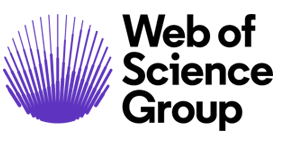Artificial Intelligence for Application in Water Engineering: The Use of ANN to Determine Water Quality Index in Rivers
Downloads
Doi:10.28991/CEJ-2024-010-07-012
Full Text:PDF
Downloads
[2] Caddis, B., Nielsen, C., Hong, W., Anun Tahir, P., & Yenn Teo, F. (2012). Guidelines for floodplain development – a Malaysian case study. International Journal of River Basin Management, 10(2), 161–170. doi:10.1080/15715124.2012.688750.
[3] Sharma, A., Naidu, M., & Sargaonkar, A. (2013). Development of computer automated decision support system for surface water quality assessment. Computers & Geosciences, 51, 129–134. doi:10.1016/j.cageo.2012.09.007.
[4] Luo, P., He, B., Takara, K., Razafindrabe, B. H. N., Nover, D., & Yamashiki, Y. (2011). Spatiotemporal trend analysis of recent river water quality conditions in Japan. Journal of Environmental Monitoring, 13(10), 2819–2829. doi:10.1039/c1em10339c.
[5] Avvannavar, S. M., & Shrihari, S. (2007). Evaluation of water quality index for drinking purposes for river Netravathi, Mangalore, South India. Environmental Monitoring and Assessment, 143(1–3), 279–290. doi:10.1007/s10661-007-9977-7.
[6] Wang, M., Bodirsky, B. L., Rijneveld, R., Beier, F., Bak, M. P., Batool, M., Droppers, B., Popp, A., van Vliet, M. T. H., & Strokal, M. (2024). A triple increase in global river basins with water scarcity due to future pollution. Nature Communications, 15(1), 880. doi:10.1038/s41467-024-44947-3.
[7] Mohan Raj, K., & Vairavel, K. S. (2024). Quality index metrics with Bi-GRU-based water quality prediction. Energy Sources, Part A: Recovery, Utilization and Environmental Effects, 46(1), 171–187. doi:10.1080/15567036.2023.2272658.
[8] Chidiac, S., El Najjar, P., Ouaini, N., El Rayess, Y., & El Azzi, D. (2023). A comprehensive review of water quality indices (WQIs): history, models, attempts and perspectives. Reviews in Environmental Science and Biotechnology, 22(2), 349–395. doi:10.1007/s11157-023-09650-7.
[9] Murivhami, T., Tartibu, L. K., & Olayode, I. O. (2023). Applications of Artificial Neural Network in the Prediction of Water Quality Index. 2023 14th International Conference on Mechanical and Intelligent Manufacturing Technologies (ICMIMT), Cape Town, South Africa. doi:10.1109/icmimt59138.2023.10199388.
[10] Mamat, N., Mohd Razali, S. F., & Hamzah, F. B. (2023). Enhancement of water quality index prediction using support vector machine with sensitivity analysis. Frontiers in Environmental Science, 10, 1061835. doi:10.3389/fenvs.2022.1061835.
[11] Sidek, L. M., Mohiyaden, H. A., Marufuzzaman, M., Noh, N. S. M., Heddam, S., Ehteram, M., Kisi, O., & Sammen, S. S. (2024). Developing an ensembled machine learning model for predicting water quality index in Johor River Basin. Environmental Sciences Europe, 36(1), 67. doi:10.1186/s12302-024-00897-7.
[12] Diop, M., Mall, I., Sonko, E. H. M., Diop, T., Badji, L., & Mbow, C. (2023). Development and Application of Water Quality Index (WQI) for the Evaluation of the Physico-Chemical Quality of Groundwater in Gold Mining Areas of Southeastern Senegal. Journal of Water Resource and Protection, 15(02), 33–50. doi:10.4236/jwarp.2023.152003.
[13] Muthukumaran, V., & Vinoth kumar, V. (2022). Water Quality Index Process Using Artificial Neural Networks. International Journal of Information Technology, Research and Applications, 1(1), 33–37. doi:10.59461/ijitra.v1i1.12.
[14] Sekarlangit, S., Widodo, C. E., & Tarno, T. (2024). A Comparison of Artificial Neural Network (ANN) and Long Short-Term Memory (LSTM) in River Water Quality Prediction. International Journal of Current Science Research and Review, 7(4), 2000-2005. doi:10.47191/ijcsrr/v7-i4-02.
[15] Š tambuk-Giljanović, N. (1999). Water quality evaluation by index in Dalmatia. Water Research, 33(16), 3423–3440. doi:10.1016/S0043-1354(99)00063-9.
[16] Tao, H., Bobaker, A. M., Ramal, M. M., Yaseen, Z. M., Hossain, M. S., & Shahid, S. (2019). Determination of biochemical oxygen demand and dissolved oxygen for semi-arid river environment: application of soft computing models. Environmental Science and Pollution Research, 26(1), 923–937. doi:10.1007/s11356-018-3663-x.
[17] Al-Mattarneh, H., & Alwadie, A. (2016). Development of Low Frequency Dielectric Cell for Water Quality Application. Procedia Engineering, 148, 687–693. doi:10.1016/j.proeng.2016.06.554.
[18] Al-Mattarneh, H., Ismail, R., Nuruddin, M., Shafiq, N., & Dahim, M. (2016). Characterization of Pb and Cd contaminated sandy soil by dielectric means. Civil, Offshore and Environmental Engineering, 327–330.
[19] Fan, X., Lv, S., Xia, C., Ge, D., Liu, C., & Lu, W. (2024). Strength prediction of asphalt mixture under interactive conditions based on BPNN and SVM. Case Studies in Construction Materials, e03489. doi:10.1016/j.cscm.2024.e03489.
[20] Dahim, M., Abuaddous, M., Al-Mattarneh, H., Rawashdeh, A., & Ismail, R. (2021). Enhancement of road pavement material using conventional and nano-crude oil fly ash. Applied Nanoscience (Switzerland), 11(10), 2517–2524. doi:10.1007/s13204-021-02103-z.
[21] Abdullahi, M., Al-Mattarneh, H. M. A., & Mohammed, B. S. (2009). Statistical modeling of lightweight concrete mixtures. European Journal of Scientific Research, 31(1), 124–131.
[22] Hameed, M., Sharqi, S. S., Yaseen, Z. M., Afan, H. A., Hussain, A., & Elshafie, A. (2017). Application of artificial intelligence (AI) techniques in water quality index prediction: a case study in tropical region, Malaysia. Neural Computing and Applications, 28(1), 893–905. doi:10.1007/s00521-016-2404-7.
[23] Tiyasha, Tung, T. M., & Yaseen, Z. M. (2020). A survey on river water quality modelling using artificial intelligence models: 2000–2020. Journal of Hydrology, 585, 124670. doi:10.1016/j.jhydrol.2020.124670.
[24] Ho, J. Y., Afan, H. A., El-Shafie, A. H., Koting, S. B., Mohd, N. S., Jaafar, W. Z. B., Lai Sai, H., Malek, M. A., Ahmed, A. N., Mohtar, W. H. M. W., Elshorbagy, A., & El-Shafie, A. (2019). Towards a time and cost-effective approach to water quality index class prediction. Journal of Hydrology, 575, 148–165. doi:10.1016/j.jhydrol.2019.05.016.
[25] Ismail, R., Dahim, M., Jaradat, A., Hatamleh, R., Telfah, D., Abuaddous, M., & Al-Mattarneh, H. (2021). Field Dielectric Sensor for Soil Pollution Application. IOP Conference Series: Earth and Environmental Science, 801(1), 012003. doi:10.1088/1755-1315/801/1/012003.
[26] Zain, M. F. M., Karim, M. R., Islam, M. N., Hossain, M. M., Jamil, M., & Al-Mattarneh, H. M. A. (2015). Prediction of strength and slump of silica fume incorporated high-performance concrete. Asian Journal of Scientific Research, 8(3), 264–277. doi:10.3923/ajsr.2015.264.277.
[27] Abdullahi, M., Al-Mattarneh, H. M. A., & Mohammed, B. S. (2009). A matlab program for diagnosis and adjustment of mix proportions of structural lightweight concrete. European Journal of Scientific Research, 31(1), 106–123.
[28] Dahim, M., Abuaddous, M., Ismail, R., Al-Mattarneh, H., & Jaradat, A. (2020). Using a dielectric capacitance cell to determine the dielectric properties of pure sand artificially contaminated with Pb, Cd, Fe, and Zn. Applied and Environmental Soil Science, 2020(8838054). doi:10.1155/2020/8838054.
[29] Ermeey, A. K., Ghodgaonkar, D. K., & Al-Mattarneh, H. M. A. (2003). Three probe reflectometer algorithms for complex coefficient measurements of water quality at microwave frequencies. Asia-Pacific Conference on Applied Electromagnetics, 2003. APACE 2003. doi:10.1109/apace.2003.1234481.
[30] Lee Yoot Khuan, Hamzah, N., & Jailani, R. (2002). Prediction of water quality index (WQI) based on artificial neural network (ANN). Student Conference on Research and Development. doi:10.1109/scored.2002.1033081.
[31] Almattarneh, H., Alwadie, A., Malkawi, A., & Nuruddin, M. F. (2014). A novel method for monitoring hydration process of cement paste material. Applied Mechanics and Materials, 567, 333–338. doi:10.4028/www.scientific.net/AMM.567.333.
[32] Ministry of Natural Resources and Environment (2006). Malaysia Environmental Quality Report 2006. Department of Environment, Ministry of Natural Resources and Environment, Petaling Jaya, Malaysia.
[33] Gazzaz, N. M., Yusoff, M. K., Aris, A. Z., Juahir, H., & Ramli, M. F. (2012). Artificial neural network modeling of the water quality index for Kinta River (Malaysia) using water quality variables as predictors. Marine Pollution Bulletin, 64(11), 2409–2420. doi:10.1016/j.marpolbul.2012.08.005.
[34] Cude, C. G. (2001). Oregon water quality index: A tool for evaluating water quality management effectiveness. Journal of the American Water Resources Association, 37(1), 125–137. doi:10.1111/j.1752-1688.2001.tb05480.x.
[35] Boyacioglu, H. (2007). Development of a water quality index based on a European classification scheme. Water SA, 33(1), 101–106. doi:10.4314/wsa.v33i1.47882.
[36] Song, T., & Kim, K. (2009). Development of a water quality loading index based on water quality modeling. Journal of Environmental Management, 90(3), 1534–1543. doi:10.1016/j.jenvman.2008.11.008.
[37] Debels, P., Figueroa, R., Urrutia, R., Barra, R., & Niell, X. (2005). Evaluation of water quality in the Chillán River (Central Chile) using physicochemical parameters and a modified Water Quality Index. Environmental Monitoring and Assessment, 110(1–3), 301–322. doi:10.1007/s10661-005-8064-1.
[38] Liou, S. M., Lo, S. L., & Wang, S. H. (2004). A generalized water quality index for Taiwan. Environmental Monitoring and Assessment, 96(1–3), 35–52. doi:10.1023/B:EMAS.0000031715.83752.a1.
[39] Naji, A., & Ismail, A. (2012). Metals Fractionation and Evaluation of their Risk Connected with Urban and Industrial Influx in the Klang River Surface Sediments, Malaysia. EnvironmentAsia, 5(1), 17-25.
[40] Malik, A., Kumar, A., Kisi, O., & Shiri, J. (2019). Evaluating the performance of four different heuristic approaches with Gamma test for daily suspended sediment concentration modeling. Environmental Science and Pollution Research, 26(22), 22670–22687. doi:10.1007/s11356-019-05553-9.
[41] Sepahvand, A., Singh, B., Sihag, P., Nazari Samani, A., Ahmadi, H., & Fiz Nia, S. (2019). Assessment of the various soft computing techniques to predict sodium absorption ratio (SAR). ISH Journal of Hydraulic Engineering, 27(Sup1), 124–135. doi:10.1080/09715010.2019.1595185.
[42] Alizadeh, M. J., Kavianpour, M. R., Danesh, M., Adolf, J., Shamshirband, S., & Chau, K. W. (2018). Effect of river flow on the quality of estuarine and coastal waters using machine learning models. Engineering Applications of Computational Fluid Mechanics, 12(1), 810–823. doi:10.1080/19942060.2018.1528480.
[43] Olyaie, E., Banejad, H., Chau, K. W., & Melesse, A. M. (2015). A comparison of various artificial intelligence approaches performance for estimating suspended sediment load of river systems: a case study in United States. Environmental Monitoring and Assessment, 187(4), 189. doi:10.1007/s10661-015-4381-1.
[44] Elzwayie, A., El-shafie, A., Yaseen, Z. M., Afan, H. A., & Allawi, M. F. (2017). RBFNN-based model for heavy metal prediction for different climatic and pollution conditions. Neural Computing and Applications, 28(8), 1991–2003. doi:10.1007/s00521-015-2174-7.
[45] Ghorbani, M. A., Khatibi, R., Karimi, V., Yaseen, Z. M., & Zounemat-Kermani, M. (2018). Learning from Multiple Models Using Artificial Intelligence to Improve Model Prediction Accuracies: Application to River Flows. Water Resources Management, 32(13), 4201–4215. doi:10.1007/s11269-018-2038-x.
[46] Yaseen, Z. M., Sulaiman, S. O., Deo, R. C., & Chau, K. W. (2019). An enhanced extreme learning machine model for river flow forecasting: State-of-the-art, practical applications in water resource engineering area and future research direction. Journal of Hydrology, 569, 387–408. doi:10.1016/j.jhydrol.2018.11.069.
[47] Ismail, R., Alsadi, J., Hatamleh, R., Telfah, D., Jaradat, A., Aljamal, M., Trrad, I., & Al-Mattarneh, H. (2024). Employing CNN and black widow optimization for sustainable wastewater management in an environmental engineering context. Asian Journal of Civil Engineering, 25(5), 3973–3988. doi:10.1007/s42107-024-01024-w.
[48] Al-Mattarneh, H., & Dahim, M. (2018). Determination of Water Quality Parameters Using Microwave Nondestructive Method. International Journal of Engineering & Technology, 7(3.32), 182-185.
[49] Othman, F., Alaaeldin, M. E., Seyam, M., Ahmed, A. N., Teo, F. Y., Ming Fai, C., Afan, H. A., Sherif, M., Sefelnasr, A., & El-Shafie, A. (2020). Efficient river water quality index prediction considering minimal number of inputs variables. Engineering Applications of Computational Fluid Mechanics, 14(1), 751–763. doi:10.1080/19942060.2020.1760942.
[50] Ismail, R., Aljamal, M., Al-Mattarneh, H., Das, A., & Pawar, R. K. (2023). Sustainable Infrastructure Development: Integrating Environmental and Social Factors in Civil Engineering”. Journal of Advanced Zoology, 44(S2), 4730–4737. doi:10.53555/jaz.v44iS2.2205.
[51] Dahim, M., Al-Mattarneh, H., & Ismail, R. (2018). Simple capacitor dielectric sensors for determination of water content in transformer oil. International Journal of Engineering & Technology, 7(3), 157–160. www.sciencepubco.com/index.php/IJET
[52] Ismail, R. (2024). Improving wastewater treatment plant performance: an ANN-based predictive model for managing average daily overflow and resource allocation optimization using Tabu search. Asian Journal of Civil Engineering, 25(2), 1427–1441. doi:10.1007/s42107-023-00853-5.
[53] Kasmuri, N., Hadi, N. A., & Omar, M. (2017). Water Quality Assessment in Klang River Basin, Malaysia. Proceedings of the 37th IAHR World Congress, 6865, 270–273, 13–18 August, 2017, Kuala Lumpur, Malaysia.
[54] Telfah, D. B., Jaradat, A. Q., & Ismail, R. (2024). Examining the Long-Run and Short-Run Relationship between Water Demand and Socio-Economic Explanatory Variables: Evidence from Amman. Sustainability (Switzerland), 16(6), 2315. doi:10.3390/su16062315.
[55] Ismail, R. M. A., Enemose, E. A., Al-Jamal, M., Trrad, I., Al-Mattarneh, H., Tripathi, V., & Patil, P. Y. (2022). Study on Cu Based Organic Linkers for Effective Emission Control over Diesel Engine Effuluents. Key Engineering Materials, 928, 61–67. doi:10.4028/p-4nz3up.
[56] Zain, M. F. M., Al-Mattarneh, H., Rama, S. N., & Mahmud, H. B. (2008). A Knowledge-based system for mix design of concrete containing pozzolanic materials. Proceedings of the AEI 2008 Conference - AEI 2008: Building Integration Solutions, 328. doi:10.1061/41002(328)57.
- Authors retain all copyrights. It is noticeable that authors will not be forced to sign any copyright transfer agreements.
- This work (including HTML and PDF Files) is licensed under a Creative Commons Attribution 4.0 International License.![]()














